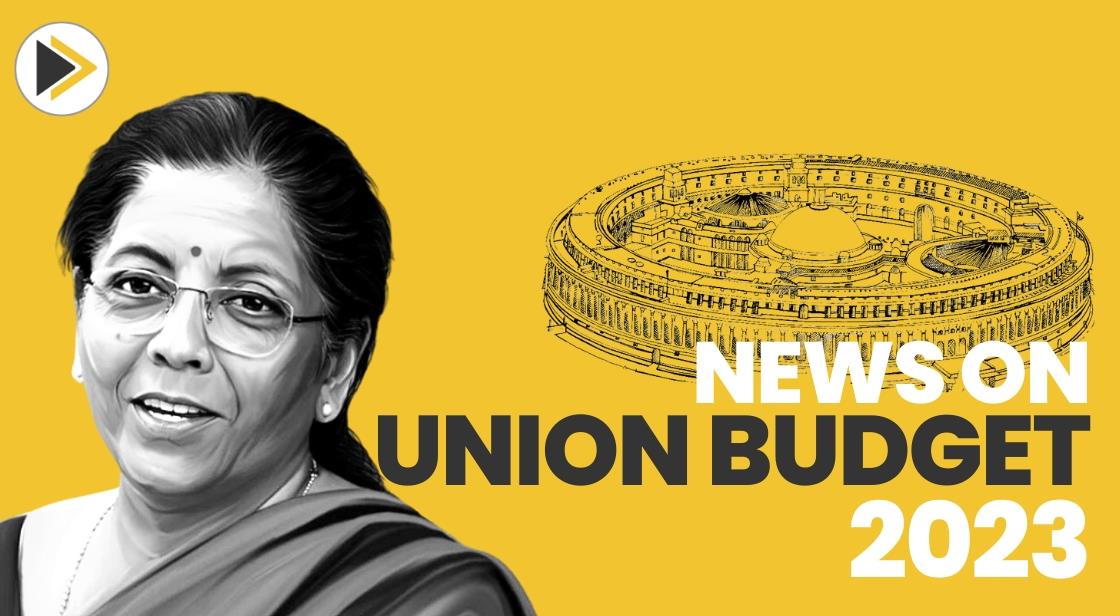Union Budget 2023: Key Highlights
948

02 Feb 2023
4 min read
News Synopsis
The Union Budget 2023 was unveiled in Parliament on Wednesday by Finance Minister Nirmala Sitharaman at a time when the Indian economy is grappling with a number of external issues, including a sharp rise in inflation and a potential slowdown in GDP growth in FY24.
By laying out a realistic pro-growth approach in the Budget 2023–24, the finance minister has created a road for India to go up to the third-largest global economy by the end of this decade from its current position as the fifth-largest.
The Union Budget 2023–24's highlights
- In around nine years, the per capita income more than doubled to Rs 1.97 lakh.
- Over the past nine years, the Indian economy has grown from being the 10th to the 5th largest in the world.
- The budget's seven "Saptarishi" priorities are: inclusive development, reaching the last mile, infrastructure and investment, unleashing the potential, green growth, youth power, and the financial sector.
- The PM Awas Yojana budget has been increased by 66% to more than Rs 79,000 crore.
- The Railways have received a capital budget of Rs 2.40 lakh crore, which is the highest amount ever and nearly nine times the outlay from 2013–14.
- To train youth for opportunities abroad, 30 Skill India International Centers would be established throughout several states.
- An updated credit guarantee scheme for MSMEs will go into effect on April 1, 2023, with an infusion of Rs 9,000 crore into the corpus. This scheme would enable an additional Rs 2 lakh crore of collateral-free guaranteed lending while also lowering the cost of the credit by approximately 1%.
- The Senior Citizen Savings Scheme would increase its maximum deposit amount from Rs. 15 lakh to Rs. 30 lakh.
- By 2025–2026, the fiscal deficit is aimed to be below 4.5%.
- A capital investment of Rs. 10 lakh crore, a sharp rise of 33% for the third year in a row, to boost economic potential and job creation, attract private investments, and act as a buffer against global headwinds.
- Rs 15,000 crore for the Pradhan Mantri PVTG Development Mission's implementation over the next three years under the Scheduled Tribes' Development Action Plan.
- A total of Rs 75,000 crore will be invested, of which Rs 15,000 crore would come from private sources, in 100 projects that will provide essential last- and first-mile connections for the ports, coal, steel, fertilizer, and food grains industries.
- To increase the chances for private investment in infrastructure, a new Infrastructure Finance Secretariat is established.
- The National Data Governance Policy will be released to encourage research and innovation among academics and start-ups.
- To promote ease of doing business, PAN shall be utilized as the universal identity for all digital systems of the designated government agencies.
- Through the convergence of MGNREGS, CAMPA Fund, and other sources, the "Mangrove Initiative for Shoreline Habitats & Tangible Incomes," or MISHTI, will be undertaken for mangrove plantation along the coastline and on salt pan lands.
- A one-time unique small savings scheme called the Mahila Samman Savings Certificate will be introduced to honour Azadi Ka Amrit Mahotsav. For a period of two years (until March 2025), it will provide a deposit facility of up to Rs 2 lakh in the names of women or girls at a fixed interest rate of 7.5% with the option of a partial withdrawal.
- States are permitted a fiscal deficit of 3.5% of GSDP, of which 0.5% is related to changes in the power sector.
- According to the Budget Estimate, the fiscal deficit for the current fiscal is 6.4% of GDP.
- It is projected that there will be Rs 15.4 lakh crore in gross market borrowings in 2023–24.
- To further enhance taxpayer services, efforts are being made to strengthen the grievance redressal process and provide a new Common IT Return Form for the benefit of taxpayers.
- Under the new tax system, the Personal Income Tax Rebate Limit will rise from the present Rs. 5 lakh to Rs. 7 lakh. People in the new tax regime who make up to Rs 7 lakh do not have to pay any taxes.
- The tax structure of the new personal income tax regime, which had six income slabs when it was launched in 2020, would be altered by decreasing the number of slabs to five and raising the tax exemption threshold to Rs 3 lakh.
- The highest surcharge rate was decreased from 37% to 25% under the new tax system. The maximum personal income tax rate will thus be decreased to 39%.
- The non-government paid employee threshold for tax exemption on leave encashment after retirement would rise to Rs 25 lakh.
- There are now 13 instead of 21 basic customs tax rates for items other than textiles and agriculture.
- Markets close on a mixed note on Budget Day, with the Sensex rising 158 points and the Nifty falling 46 points.
- On Budget Day, the rupee loses 2 paise to end at 81.90 against the US dollar.
You May Like
Business and Economy
Business and Economy
Business and Economy
Business and Economy









